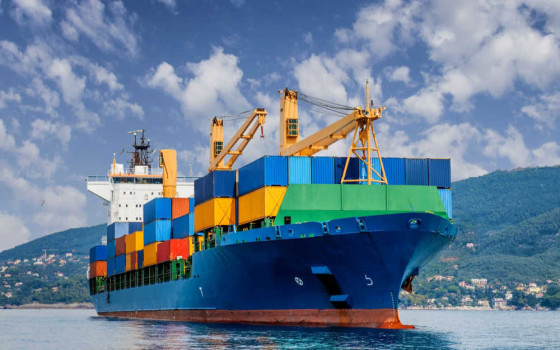
More than 67% of freight transported within the European Union is by sea

- Europe and Arabs
- Friday , 18 April 2025 7:14 AM GMT
Brussels: Europe and the Arabs
Nearly two-thirds (67.4%) of all freight transported within the European Union is by sea, based on the quantity of goods and the distance traveled (ton-kilometers). Road freight transport accounted for 25.3% of total freight, while rail transport accounted for 5.5%. Inland waterways accounted for 1.6% of total freight transport, while air transport accounted for 0.2%. This is based on figures for 2023.
Compared to 2013, road transport was the only mode of transport to see an increase in its share, rising by 2.8 percentage points over the ten-year period. Meanwhile, the share of maritime transport decreased by 2.0 percentage points, inland waterways by 0.6 percentage points, and rail transport by 0.2 percentage points. This information is derived from data on the distribution of freight transport modes published by Eurostat, the European Statistical Office in Brussels. It added that in 15 of the 22 EU countries with coastlines, maritime transport was the primary mode of freight transport, and in 10 countries, it accounted for more than 70% of freight transport. More than 95% of freight was transported by sea in Portugal (98.2%), Cyprus (96.5%), and Greece (96.4%).
Meanwhile, more than 70% of all freight was transported by road in Luxembourg (84.5%), the Czech Republic (77.7%), and Hungary (70.7%).
High rates of freight transport by rail were recorded in Lithuania (31.7%), Slovakia (30.1%), Austria (29.1%), and Slovenia (27.1%). Romania recorded the highest share of goods transported via its inland waterways (18.9%), followed by the Netherlands (11.7%) and Bulgaria (8.7%).
Air transport accounted for at least 1% of total freight transport in only seven countries, with Romania (1.6%), Luxembourg (1.5%), Hungary, and Lithuania (1.3% each) recording the highest proportions.












No Comments Found